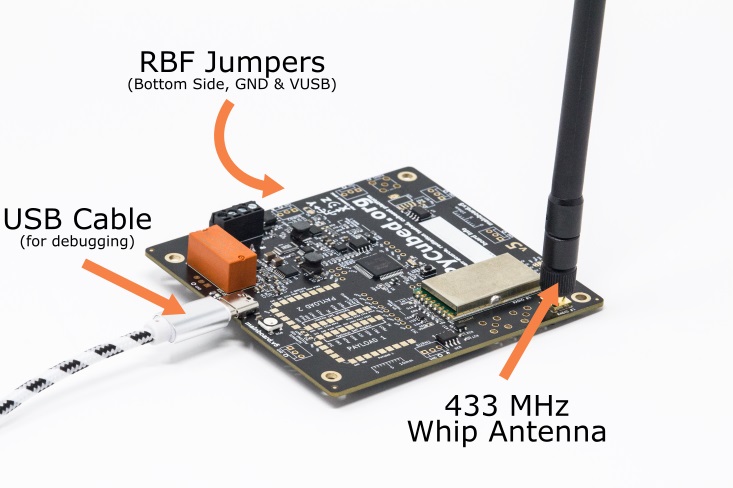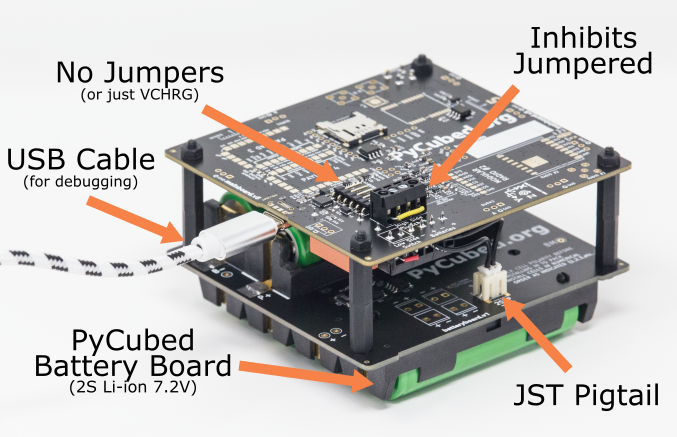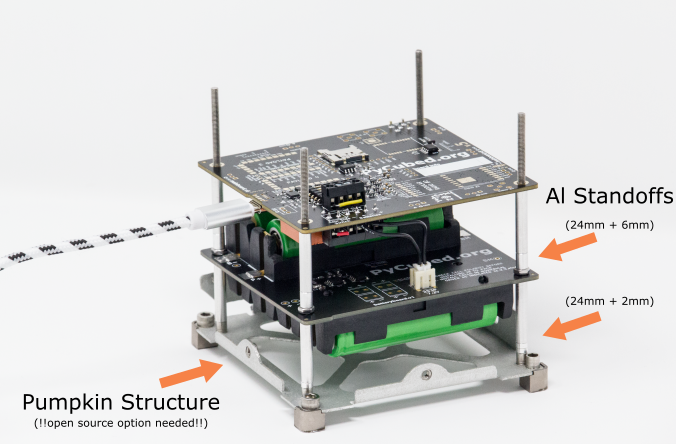Benchtop Usage & CubeSat Structures
Benchtop (USB Powered)
Most common setup for general development and testing. We estimate our boards spend ~90% of their time in this configuration during software development.

Benchtop (Battery Powered)
Most common for benchtop development and testing when full radio output power is needed. Also helpful for characterizing power consumption or energy harvesting.

You may notice the mainboard is upside down as compared to the benchtop (USB powered) example. After countless tests and example scenarios, we've found this configuration best fit our various mission needs.
- That isn't to say it doesn't fit with the mainboard turned the other way around. You'll just want a longer JST pigtail. Test what you fly. Fly what you test.
- In the above configuration, the RF connector to Radio #1 would likely be moved to the opposite of the board. A benefit of through-hole connectors! 🎉 All solar, RF, and GPIO connectors can accommodate mounting on the top-side or bottom-side of the board.
In a CubeSat Structure

If you're not aware, Pumpkin Inc. has been instrumental in teaching and supplying educational and hobbyist builders of CubeSats for nearly as long as Prof. Twiggs and Prof. Puig-Suari have been teaching about them.
- We've found Pumpkin structures (pictured above) convenient for recent missions, but the cost (💰💰💰) and certain structure design decisions make them less than ideal chassis for our needs.
- Multiple universities and even some companies have contacted us about their structures in the works, but we've yet to see any designs open-sourced and ready to fly. We're looking forward to seeing what's in the works!